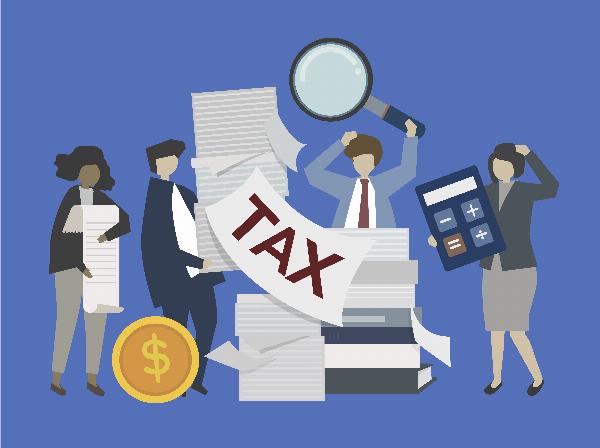How to Effectively Manage and Utilize Official Employment Income Proofs ?

Strong8k brings an ultra-HD IPTV experience to your living room and your pocket.
Official documents, such as employment income proofs, are crucial in any professional environment. These documents, which include payslips, income certificates, and tax documents, are essential for various purposes, including loan applications, financial planning, and legal compliance. Understanding how to efficiently manage and utilize these proofs is vital for employers and employees.
Importance of Employment Income Proofs
Employment income proofs serve multiple critical functions:
Verification of Employment and Income: They confirm an individual's employment status and income level, which is necessary for financial transactions, such as loan approvals and lease agreements.
- Legal Compliance: Employers are legally required to provide accurate income documentation to employees, ensuring transparency and accountability in financial reporting.
- Financial Planning: These documents help employees track their earnings, deductions, and net income, enabling better financial management and planning.
Types of Employment Income Proofs
Several types of documents can serve as employment income proofs:
Payslips: Detailed records of an employee's earnings and deductions for each pay period.
Employment Income Certificates are official documents that summarize an employee's earnings over a specified period. They are often required for visa applications or loan approvals.
- Tax Documents: Include annual tax statements like Form 16 in India, which comprehensively summarize the income earned and tax deducted.
- Bank Statements: Reflect the actual salaries deposited into an employee's account, which can serve as proof of income.
Managing Employment Income Proofs
Effective management of employment income proofs involves several best practices to ensure they are readily available, accurate, and secure.
1. Organizing and Storing Documents
- Digital Storage: Keep digital copies of all documents in secure cloud storage solutions. This not only saves physical space but also ensures easy access and backup in case of emergencies.
- Physical Storage: Maintaining a well-organized filing system for physical copies, categorizing documents by type and date. Use fireproof and waterproof filing cabinets to protect sensitive information.
- Regular Updates: Ensure that all records are regularly updated. For instance, payslips and income certificates should be updated after each pay cycle or significant financial change.
2. Ensuring Accuracy and Consistency
- Regular Audits: Conduct regular audits of income proofs to ensure that all information is accurate and up-to-date. This helps identify any discrepancies or errors that need correction.
- Cross-Verification: Cross-verify the details in the payslips, income certificates, and tax documents. This includes checking for consistency in employee details, earnings, and deductions.
3. Maintaining Confidentiality and Security
- Access Control: Limit access to sensitive financial documents to authorized personnel only. Implement strong password protections and two-factor authentication for digital records.
- Data Encryption: Use data encryption tools for storing and transmitting digital copies of income proofs. This ensures that sensitive information remains protected from unauthorized access.
Utilizing Employment Income Proofs
Utilizing employment income proofs effectively requires understanding their significance in various scenarios and knowing how to present them appropriately.
1. For Loan Applications
Providing accurate proof of income is crucial when applying for loans, such as personal loans, home loans, or car loans. Lenders use these documents to assess the applicant's repayment capacity. Typically, lenders request:
- Payslips from the Last Three Months: To verify the applicant's current income and job stability.
- Employee Salary Certificate: To provide a summary of the applicant's applicant's annual income, bonuses, and other financial compensations.
2. For Tax Filing and Compliance
Employees need proof of income to file taxes accurately. These documents help in the following:
- Calculating Taxable Income: Payslips and income certificates provide details about gross income, deductions, and net income, which are essential for calculating taxable income.
- Claiming Deductions and Exemptions: Certain allowances and deductions, such as housing rent allowances and tax-saving investments, can be claimed based on the details provided in the income proofs.
3. For Employment Verification
During job transitions or visa applications, employment income proofs are often required to verify an individual's employment history and income stability. Employers may need to provide:
- Employment Income Certificates: To confirm the employee's tenure, role, and income level.
- Reference Letters: Although not income proofs, these letters may complement the income certificates by providing additional context on the employee's role and performance.
Best Practices for Employers
Employers are responsible for providing accurate and timely proof of income to their employees. Some best practices include:
- Timely Issuance of Documents: Ensure that all income proofs, such as payslips and income certificates, are issued promptly. This helps employees manage their finances and comply with tax regulations.
- Clear Communication: Explain all deductions and allowances in the payslips. This transparency helps employees understand their earnings and tax liabilities.
- Responding to Requests: Be responsive to employee requests for additional documentation, such as an employee salary certificate, for loan applications or other financial transactions.
Best Practices for Employees
Employees should also take proactive steps to manage and utilize their income proofs effectively:
- Regular Monitoring: Review payslips and other proof of income regularly to ensure accurate details. Report any discrepancies to the employer immediately.
- Secure Storage: Securely store all physical and digital copies. For digital files, consider using encryption and secure backup solutions.
- Use of Professional Services: Consider consulting a professional accountant or financial advisor for complex financial or tax matters. They can help interpret the documents and provide advice on optimizing financial decisions.
Conclusion
Managing and utilizing employment income proofs is essential to both professional and personal financial management. By understanding the types of documents available, maintaining accurate and secure records, and knowing how to use these documents in various scenarios, individuals and organizations can ensure transparency, compliance, and financial stability. These proofs are pivotal in numerous critical processes, whether for loan applications, tax filings, or employment verifications. Properly handling and utilizing these documents simplify financial management and provide a solid foundation for achieving broader financial goals.
Note: IndiBlogHub features both user-submitted and editorial content. We do not verify third-party contributions. Read our Disclaimer and Privacy Policyfor details.







